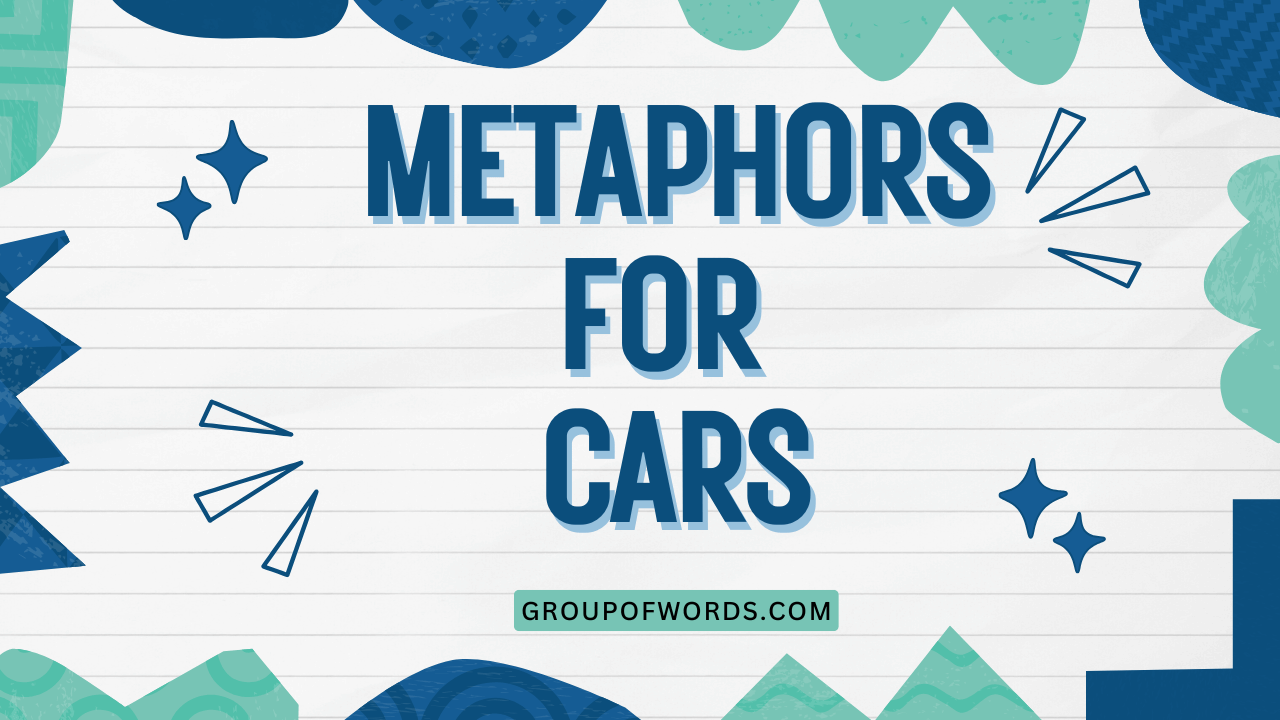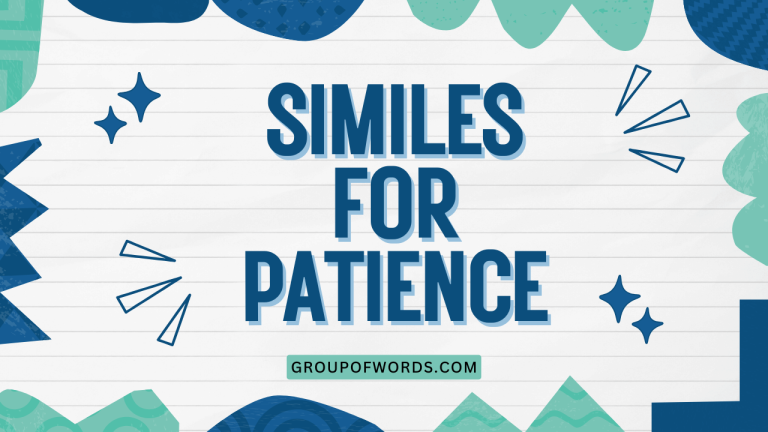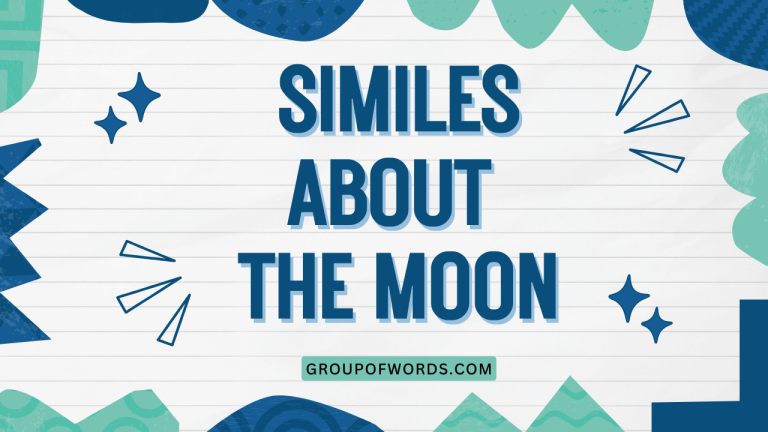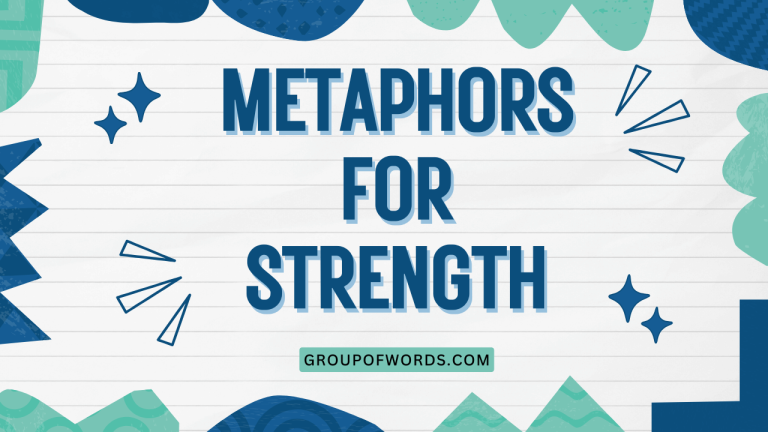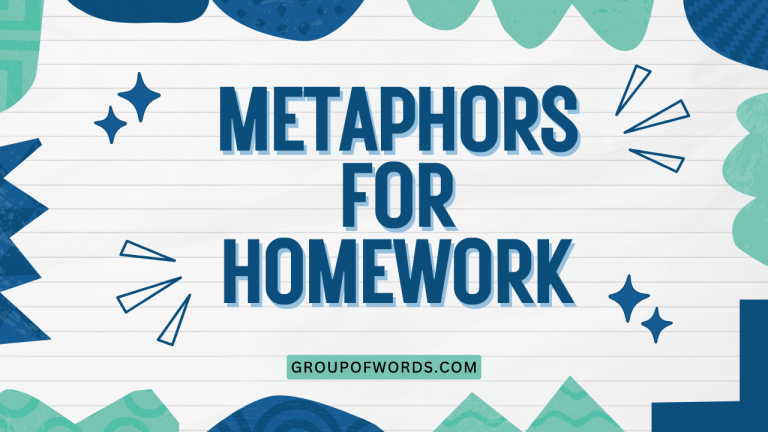Cars as Metaphors: Exploring Figurative Language in Automotive Contexts
Metaphors are powerful tools that enrich our language, allowing us to understand complex concepts by relating them to more familiar ones. The automotive world, with its blend of technology, speed, and personal connection, provides fertile ground for metaphorical expression.
Understanding how cars are used metaphorically enhances our comprehension of both language and the cultural significance of automobiles. This article will delve into the various ways cars are used as metaphors, exploring their structural elements, types, usage rules, and common mistakes.
This exploration will benefit students of English, writers, and anyone interested in the intersection of language and technology.
By mastering the art of recognizing and using car metaphors, you’ll be able to express yourself more vividly and interpret others’ communication more effectively. This article provides a comprehensive guide, complete with examples, exercises, and FAQs to ensure a thorough understanding of the subject.
Table of Contents
- Introduction
- Definition of Metaphor and Car Metaphors
- What is a Metaphor?
- Defining Car Metaphors
- Structural Breakdown of Car Metaphors
- Source Domain: The Car
- Target Domain: What the Car Represents
- Linking Elements: Shared Characteristics
- Types and Categories of Car Metaphors
- Speed and Power Metaphors
- Status and Luxury Metaphors
- Journey and Life Metaphors
- Control and Autonomy Metaphors
- Deterioration and Decline Metaphors
- Examples of Car Metaphors
- Speed and Power Examples
- Status and Luxury Examples
- Journey and Life Examples
- Control and Autonomy Examples
- Deterioration and Decline Examples
- Usage Rules for Car Metaphors
- Contextual Appropriateness
- Audience Understanding
- Avoiding Overuse and Clichés
- Common Mistakes When Using Car Metaphors
- Mixed Vehicle Metaphors
- Inappropriate Connotations
- Practice Exercises
- Exercise 1: Identifying Car Metaphors
- Exercise 2: Creating Car Metaphors
- Advanced Topics in Car Metaphors
- Extended Car Metaphors
- Cultural Variations in Car Metaphors
- Frequently Asked Questions (FAQs)
- Conclusion
Definition of Metaphor and Car Metaphors
What is a Metaphor?
A metaphor is a figure of speech that describes an object or action in a way that isn’t literally true, but helps explain an idea or make a comparison. It asserts that one thing *is* another thing, not in a literal sense, but in a figurative one.
Metaphors enhance understanding by transferring qualities or characteristics from one concept (the source) to another (the target). For example, saying “He is a lion in battle” doesn’t mean he’s literally a lion, but it implies he’s brave and fierce like a lion.
Metaphors are fundamental to language and thought, shaping how we perceive and communicate complex ideas. They are present in everyday conversation, literature, and even scientific discourse.
Defining Car Metaphors
Car metaphors involve using cars, or aspects of cars, to represent something else. Given the prominent role of cars in modern life, they are a rich source of metaphorical imagery.
These metaphors can draw on various aspects of cars, such as their speed, power, luxury, reliability, or even their tendency to break down. The specific characteristic highlighted depends on the intended meaning.
Car metaphors are often used to describe abstract concepts like life, relationships, or careers, making them more relatable and understandable. They tap into our shared experiences and cultural understanding of automobiles.
Structural Breakdown of Car Metaphors
Source Domain: The Car
The source domain in a car metaphor is the car itself, or a specific characteristic of a car. This includes tangible aspects like the engine, wheels, or steering wheel, as well as abstract qualities like speed, reliability, or luxury.
The source domain provides the concrete imagery that is used to understand the target domain.
For instance, “engine” might be used to represent the driving force behind something, while “wheels” could symbolize progress or movement.
Target Domain: What the Car Represents
The target domain is the concept or idea that the car metaphor is meant to explain or illuminate. This can be anything from a person’s career to a political movement.
The effectiveness of the metaphor depends on the clear connection between the source (the car) and the target (the concept being described).
For example, in the metaphor “Her career was in overdrive,” the target domain is “career,” and the metaphor suggests a period of intense activity and progress.
Linking Elements: Shared Characteristics
The linking elements are the shared characteristics or qualities between the source and target domains that make the metaphor meaningful. These shared characteristics create the connection that allows us to understand the target domain in terms of the source domain.
Identifying these linking elements is crucial for interpreting and understanding metaphors.
In the phrase “He’s running on fumes,” the linking element is the idea of being depleted or running out of energy, which is common to both a car running on empty and a person who is exhausted.
Types and Categories of Car Metaphors
Speed and Power Metaphors
These metaphors use the speed and power associated with cars to describe the intensity or pace of something. They often convey a sense of urgency, excitement, or forcefulness.
Examples include “full throttle,” “high gear,” and “burning rubber.” These metaphors evoke images of rapid movement and potent energy.
Consider the phrase “The project is moving full throttle,” which suggests the project is progressing rapidly and with maximum effort.
Status and Luxury Metaphors
These metaphors draw on the association of cars with status and luxury to represent wealth, success, or exclusivity. They often involve imagery of high-end vehicles, such as “driving a Rolls Royce” or “cruising in a Cadillac.” These metaphors communicate a sense of privilege and opulence.
For example, “He’s living in the fast lane” implies a life of luxury and excitement, often associated with wealth and success.
Journey and Life Metaphors
These metaphors use the concept of a car journey to represent life’s path, challenges, and experiences. They often involve themes of navigation, direction, and progress.
Examples include “life is a highway,” “at a crossroads,” and “smooth sailing.” These metaphors provide a framework for understanding life as a journey with its ups and downs.
The statement “She’s navigating a difficult road in her career” suggests that she is facing challenges and obstacles in her professional life.
Control and Autonomy Metaphors
These metaphors focus on the driver’s control over the car to represent personal agency, responsibility, and decision-making. They often involve imagery of steering, brakes, and acceleration.
Examples include “take the wheel,” “put on the brakes,” and “step on the gas.” These metaphors emphasize the ability to direct one’s own life or actions.
The phrase “He took the wheel of his own destiny” implies that he assumed control over his life and made his own decisions.
Deterioration and Decline Metaphors
These metaphors use the image of a car breaking down or deteriorating to represent decline, failure, or loss of effectiveness. They often involve imagery of rust, flat tires, or engine trouble.
Examples include “running on fumes,” “falling apart,” and “hitting a brick wall.” These metaphors convey a sense of exhaustion, frustration, or hopelessness.
For example, “Their relationship is running on fumes” suggests that the relationship is nearing its end due to a lack of effort or resources.
Examples of Car Metaphors
The following sections provide detailed examples of car metaphors, categorized by type, to further illustrate their usage and meaning.
Speed and Power Examples
This table showcases examples of metaphors related to speed and power, drawing on the characteristics of cars to describe intensity, pace, and forcefulness. Each example is provided with its meaning and context.
| Metaphor | Meaning | Context |
|---|---|---|
| Full throttle | Maximum effort or speed | “The team is working at full throttle to meet the deadline.” |
| High gear | A state of intense activity | “The company moved into high gear after the new product launch.” |
| Burning rubber | Moving very quickly | “The economy is burning rubber, with record growth this quarter.” |
| Pedal to the metal | Going as fast as possible | “He had the pedal to the metal to get to the airport on time.” |
| Turbocharged | Enhanced or accelerated | “Her career was turbocharged after she landed the promotion.” |
| Revved up | Excited and ready to go | “The crowd was revved up for the concert.” |
| Like a bat out of hell | Moving extremely fast | “The news spread like a bat out of hell when the scandal broke.” |
| Speeding ahead | Making rapid progress | “The startup is speeding ahead of its competitors.” |
| Fast track | A rapid route to success | “She was put on the fast track after demonstrating her leadership skills.” |
| Racing against time | Working under extreme time pressure | “The doctors were racing against time to save the patient’s life.” |
| Zooming past | Quickly surpassing others | “The company is zooming past its rivals in market share.” |
| Picking up speed | Gradually increasing pace | “The investigation is picking up speed as new evidence emerges.” |
| Firing on all cylinders | Performing at peak efficiency | “The team is firing on all cylinders to complete the project.” |
| Power steering | Effortless control or influence | “His connections provided power steering for his career.” |
| Cruising | Moving smoothly and effortlessly | “After the initial challenges, the project is now cruising.” |
| Shift into overdrive | To work or operate at a heightened level of activity | “We need to shift into overdrive to complete this project on time.” |
| Hit top speed | To achieve the maximum level of performance or progress | “The company hit top speed after implementing the new strategies.” |
| Accelerate growth | To increase the rate of development or expansion | “The new marketing campaign is designed to accelerate growth.” |
| Gain momentum | To gather speed and strength | “The movement is gaining momentum as more people join.” |
| Velocity of change | The speed at which changes are happening | “The velocity of change in the tech industry is incredibly high.” |
| Leave in the dust | To surpass or outperform others by a great margin | “The new product left its competitors in the dust.” |
| Outpace | To go faster than someone or something | “The company is outpacing its competitors in revenue growth.” |
| Throttle back | To reduce speed or intensity | “We need to throttle back on spending to stay within budget.” |
| Gain traction | To gain support or popularity | “The new policy is finally gaining traction among voters.” |
Status and Luxury Examples
This table focuses on car metaphors that evoke status and luxury, using the imagery of high-end vehicles to represent wealth, success, and exclusivity.
| Metaphor | Meaning | Context |
|---|---|---|
| Living in the fast lane | A life of luxury and excitement | “He’s living in the fast lane, traveling the world and attending exclusive events.” |
| Driving a Rolls Royce | Experiencing the best of everything | “With his new job, he’s driving a Rolls Royce in terms of career opportunities.” |
| Cruising in a Cadillac | Enjoying a comfortable and luxurious lifestyle | “After years of hard work, she’s now cruising in a Cadillac, enjoying her retirement.” |
| Top-of-the-line | The best quality or most luxurious | “Their new house is top-of-the-line, with all the latest amenities.” |
| A well-oiled machine | Something that runs smoothly and efficiently | “The company is a well-oiled machine, with every department working in perfect harmony.” |
| Gilded cage | A luxurious but restrictive environment | “She felt trapped in her gilded cage, despite her wealth and privilege.” |
| Luxury model | The best version or example of something | “This software is the luxury model of data analysis tools.” |
| High-end performance | Superior quality and results | “The new marketing strategy delivered high-end performance.” |
| Smooth ride | An easy and comfortable experience | “The project had a smooth ride from start to finish.” |
| First-class | Of the highest quality or standard | “The service at the hotel was first-class.” |
| Elite status | A position of privilege and exclusivity | “He achieved elite status in the company after closing the major deal.” |
| Premium package | A comprehensive and high-value offering | “The company offers a premium package of benefits to its employees.” |
| The cream of the crop | The best of the best | “This university attracts the cream of the crop of students.” |
| Living the high life | Enjoying a luxurious and extravagant lifestyle | “They are living the high life, spending lavishly on travel and entertainment.” |
| Rolling in dough | Very wealthy | “After selling his company, he’s rolling in dough.” |
| Top gear | The highest level of efficiency or performance | “The team is operating in top gear to meet the deadline.” |
| Golden opportunity | A very favorable chance | “This is a golden opportunity to invest in the company.” |
| Silver platter | Something received without effort | “He was born with a silver platter in his mouth.” |
| Easy street | A state of financial comfort and security | “After winning the lottery, they were on easy street.” |
| Park Avenue | A symbol of wealth and luxury | “Her style is very Park Avenue, elegant and expensive.” |
| Uptown | Associated with wealth and sophistication | “The restaurant has an uptown vibe, with its elegant decor and high prices.” |
| Glitz and glamour | Extravagant and attractive display of wealth | “The awards show was full of glitz and glamour.” |
| Lavish lifestyle | A rich and extravagant way of living | “They lead a lavish lifestyle, with multiple homes and expensive hobbies.” |
| Red carpet treatment | Special and luxurious treatment | “The VIP guests received the red carpet treatment at the event.” |
Journey and Life Examples
This table presents car metaphors that relate to the journey of life, using themes of navigation, direction, and progress to represent personal experiences and challenges.
| Metaphor | Meaning | Context |
|---|---|---|
| Life is a highway | Life is a journey with many experiences | “Life is a highway, and I want to ride it all night long.” |
| At a crossroads | Facing a major decision | “She was at a crossroads in her career, unsure which path to take.” |
| Smooth sailing | Easy and trouble-free progress | “After the initial challenges, the project was smooth sailing.” |
| Bumpy road | A difficult or challenging period | “Their marriage has been a bumpy road, with many ups and downs.” |
| Detour | A deviation from the planned route | “His career took a detour when he decided to start his own business.” |
| Roadblock | An obstacle preventing progress | “Lack of funding was a major roadblock for the project.” |
| On the right track | Making progress in the right direction | “The company is on the right track to achieving its goals.” |
| Off the beaten path | Doing something unconventional | “They decided to go off the beaten path and explore unknown territories.” |
| Full speed ahead | Proceeding with maximum effort | “With the new funding, we can go full speed ahead with the project.” |
| Lost direction | Feeling uncertain or confused about one’s goals | “After the setback, he felt lost direction in his career.” |
| Clear the way | Remove obstacles to make progress easier | “We need to clear the way for the new project to succeed.” |
| End of the road | The conclusion or termination of something | “For that project, it’s the end of the road.” |
| Long haul | A long-term commitment or effort | “Starting a business is a long haul, requiring dedication and perseverance.” |
| Navigate challenges | Overcome difficulties | “She managed to navigate the challenges of managing a large team.” |
| Hit the road | To begin a journey | “It’s time to hit the road and start our adventure.” |
| The road ahead | Future prospects or challenges | “The road ahead is uncertain, but we are prepared for whatever comes.” |
| Take the high road | Choose the morally correct path | “In the face of adversity, they decided to take the high road.” |
| Cross that bridge when we come to it | Deal with a problem when it arises | “We’ll cross that bridge when we come to it; let’s focus on the immediate tasks.” |
| Fork in the road | A point where a decision must be made | “He came to a fork in the road and had to choose between two job offers.” |
| Go the extra mile | Put in extra effort | “She always goes the extra mile to ensure her clients are satisfied.” |
| In the driver’s seat | In control of a situation | “After the promotion, he was in the driver’s seat, making key decisions.” |
| On autopilot | Operating without conscious effort | “After years of experience, he could perform the task on autopilot.” |
| Road less traveled | An unconventional or unique path | “She chose the road less traveled by becoming a freelance artist.” |
| Steering clear | Avoiding something | “They decided to steer clear of the controversial topic.” |
| Take a back seat | To relinquish control or influence | “He decided to take a back seat and let his successor lead the team.” |
Control and Autonomy Examples
This table explores car metaphors that emphasize control and autonomy, focusing on the driver’s ability to steer, brake, and accelerate to represent personal agency and decision-making.
| Metaphor | Meaning | Context |
|---|---|---|
| Take the wheel | Assume control or responsibility | “It’s time for the younger generation to take the wheel and lead the country.” |
| Put on the brakes | Slow down or stop | “The government decided to put on the brakes on new spending initiatives.” |
| Step on the gas | Accelerate or increase effort | “We need to step on the gas to meet the project deadline.” |
| Steering committee | A group guiding a project or organization | “The steering committee is responsible for setting the strategic direction of the company.” |
| Cruise control | Maintaining a steady pace without much effort | “After automating many tasks, his job was mostly cruise control.” |
| Lost control | Unable to manage a situation | “The situation spiraled out of control after the initial missteps.” |
| Driving force | The main influence or cause | “Innovation is the driving force behind the company’s success.” |
| In the driver’s seat | In control of a situation | “After the promotion, he was in the driver’s seat, making key decisions.” |
| Calling the shots | Making the important decisions | “As the CEO, she is the one calling the shots in the company.” |
| Taking charge | Assuming control or leadership | “She took charge of the project and quickly turned it around.” |
| Helming the ship | Leading and directing | “He is helming the ship, guiding the company through the economic downturn.” |
| At the helm | In a position of leadership | “With her at the helm, the company is sure to succeed.” |
| Charting the course | Planning and directing the future | “The team is responsible for charting the course for the next five years.” |
| Guiding hand | Providing direction and support | “His mentor provided a guiding hand throughout his career.” |
| Leading the way | Setting an example for others to follow | “The company is leading the way in sustainable practices.” |
| Calling the signals | Making decisions and giving instructions | “The coach is calling the signals from the sidelines.” |
| Setting the pace | Establishing the standard for others | “The company is setting the pace in the industry with its innovative products.” |
| Taking the lead | Being in the forefront | “She is taking the lead in the negotiations.” |
| Running the show | Being in charge of an event or organization | “He is running the show behind the scenes.” |
| Pulling the strings | Secretly controlling events | “There are rumors that someone is pulling the strings to influence the outcome.” |
| Pulling rank | Using one’s authority to get something done | “He had to pull rank to get the project approved.” |
| Calling the plays | Making strategic decisions | “The quarterback is calling the plays on the field.” |
| Calling the shots | Making the important decisions | “As the CEO, she is the one calling the shots in the company.” |
| Taking the reins | Assuming control or leadership | “She took the reins of the project after the previous manager left.” |
| Holding the fort | Maintaining control in someone’s absence | “While the boss is away, I’m holding the fort.” |
Deterioration and Decline Examples
This table showcases car metaphors that represent deterioration and decline, using imagery of broken-down or malfunctioning vehicles to describe failure, exhaustion, or loss of effectiveness.
| Metaphor | Meaning | Context |
|---|---|---|
| Running on fumes | Exhausted or depleted | “After working overtime for weeks, he was running on fumes.” |
| Falling apart | Breaking down or deteriorating | “Their relationship was falling apart due to constant arguments.” |
| Hitting a brick wall | Encountering an insurmountable obstacle | “The negotiations hit a brick wall when they couldn’t agree on the terms.” |
| Out of gas | Lacking energy or motivation | “She felt out of gas and couldn’t bring herself to finish the project.” |
| Flat tire | A setback or problem | “The project hit a flat tire when the funding was unexpectedly cut.” |
| Engine trouble | Underlying problems or issues | “The company was experiencing engine trouble due to poor management.” |
| Rusting away | Declining due to neglect | “The old factory was rusting away, a symbol of the town’s decline.” |
| Breaking down | Failing to function | “The computer started breaking down after years of use.” |
| On its last legs | Near the end of its lifespan | “The old car was on its last legs, barely able to run.” |
| Going downhill | Deteriorating or declining | “The company’s performance has been going downhill since the new management took over.” |
| Losing steam | Losing momentum or enthusiasm | “The project started strong but quickly lost steam.” |
| Running out of steam | Becoming exhausted or losing motivation | “He was running out of steam after working on the project for so long.” |
| Worn out | Exhausted or used up | “The old machine was worn out after years of continuous operation.” |
| Falling apart at the seams | Experiencing severe problems or disorganization | “The company was falling apart at the seams due to internal conflicts.” |
| Kaput | Broken or not working | “The television is kaput and needs to be replaced.” |
| Crashed and burned | Failed spectacularly | “The startup crashed and burned after running out of funding.” |
| Dead in the water | Stuck or unable to progress | “The project was dead in the water after the key stakeholder withdrew support.” |
| On the skids | Declining or deteriorating rapidly | “The neighborhood has been on the skids for years, with increasing crime and poverty.” |
| Coming off the rails | Losing control or becoming disorganized | “The project came off the rails when the team missed the first major deadline.” |
| Off the rails | Out of control or behaving erratically | “His life went off the rails after he lost his job.” |
| Hitting rock bottom | Reaching the lowest point | “After losing everything, he hit rock bottom and decided to turn his life around.” |
| Going south | Deteriorating or declining | “The economy is going south due to high unemployment rates.” |
| Failing grade | An unacceptable performance or outcome | “The project received a failing grade due to poor planning.” |
| In the junkyard | Discarded or no longer useful | “His ideas were left in the junkyard, never to be implemented.” |
| At a standstill | Not progressing or moving | “The negotiations are at a standstill, with neither side willing to compromise.” |
Usage Rules for Car Metaphors
Contextual Appropriateness
The effectiveness of a car metaphor depends heavily on the context in which it is used. Consider the audience, the subject matter, and the overall tone of the communication.
A metaphor that works well in a casual conversation might be inappropriate in a formal presentation. Choose metaphors that align with the context and enhance understanding rather than causing confusion.
For example, using “full throttle” to describe a company’s aggressive marketing strategy is appropriate in a business context, but it might be out of place in a somber discussion about ethical concerns.
Audience Understanding
Ensure that your audience understands the car-related concepts you are using metaphorically. If your audience is unfamiliar with cars or certain aspects of car culture, the metaphor may fall flat or even be misinterpreted.
Tailor your metaphors to the knowledge and experience of your audience. Simpler, more universal car metaphors are generally more effective than obscure or technical ones.
Avoid using metaphors that rely on specific knowledge of car mechanics or racing terminology if your audience is not familiar with these topics.
Avoiding Overuse and Clichés
While car metaphors can be powerful, overuse can diminish their impact. Be mindful of clichés and try to find fresh, original ways to express your ideas.
Using the same metaphors repeatedly can make your writing or speech sound predictable and uninspired. Strive for creativity and variety in your metaphorical language.
Instead of always saying “life is a highway,” explore other metaphors that capture the essence of life’s journey in a more unique and engaging way.
Common Mistakes When Using Car Metaphors
Mixed Vehicle Metaphors
A mixed metaphor combines two or more incompatible metaphors, creating a confusing or nonsensical image. Avoid mixing car metaphors with other types of metaphors, especially those from different domains (e.g., nautical or aviation).
Maintain consistency in your metaphorical language to ensure clarity and coherence.
Incorrect: “He grabbed the bull by the horns and shifted into high gear.” (Mixing agricultural and automotive metaphors.)
